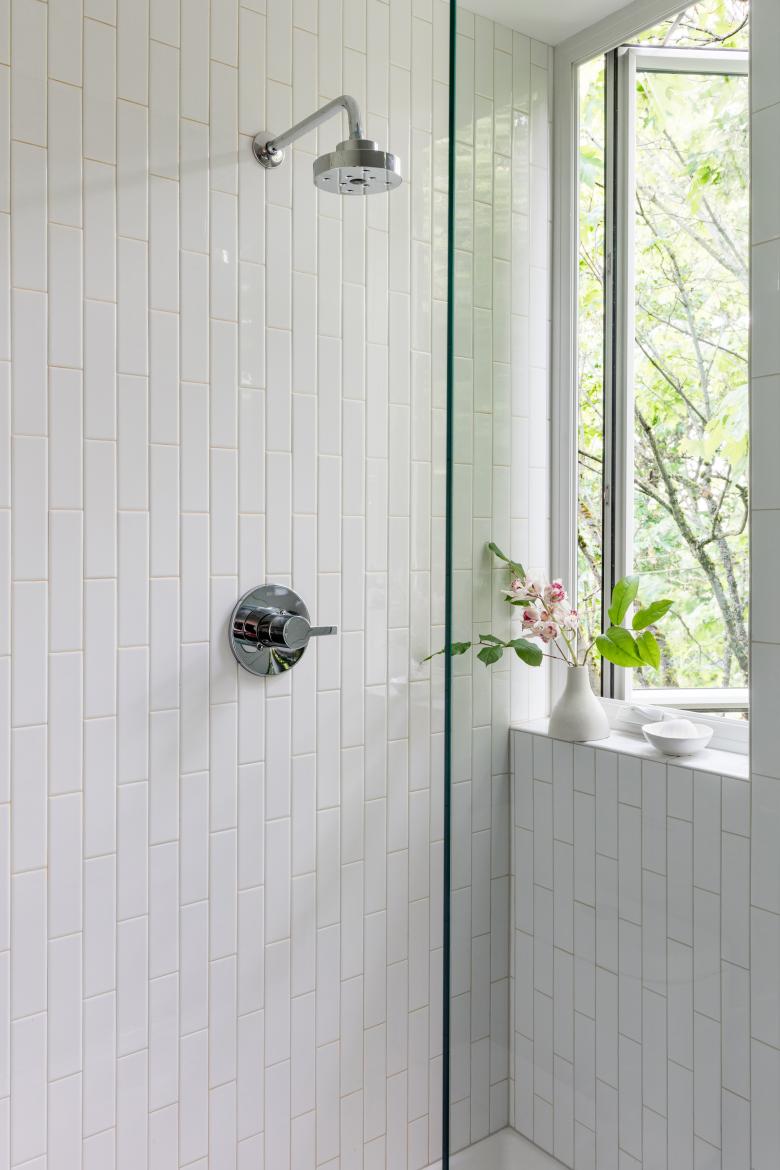Rapidly escalating construction costs in Seattle have resulted in high volume, low quality market rate housing. 2019 construction costs in Seattle were the sixth highest in the world, averaging $338/SF, and the high cost of construction has led to a proliferation of generic production housing, transforming Seattle into neighborhoods of hermetically sealed hardie-panel faux modern boxes, built of low-cost materials and disconnected from the outdoors. Tsuga Townhomes set out to resolve this paradox of low cost and high quality, working to achieve excellent sustainable design while balancing the construction cost proforma. The 3-unit urban infill project was completed at a cost of $185 per square foot — a 54% reduction in cost from the Seattle average while raising the bar for design and sustainability. Using design to maneuver complicated development restrictions, the project fit three dwellings on a 5,040 square foot site that was designated an environmentally critical area steep slope.
In order to achieve their design goals and cost targets, the architects were their own client- purchasing the land and developing and building the project themselves. They used creative possibilities within a development minded framework for acquiring materials, designing spatial layouts, and detailing. Acting as architect, developer, and contractor, the architects were able to work directly with the fabricators and tradespeople, creating efficiencies and opportunities for more custom and higher quality design and details at a lower price.
Tsuga Townhomes is located at the edge of Seattle’s Highland Park neighborhood, overlooking downtown Seattle and the Duwamish River, the historic home of Chief Seattle and the Duwamish tribes. Local Western Red Hemlock, also known as Tsuga wood, is a historic material used by local Salish people. Woodcraft and detailing using Tsuga screens were incorporated into the interiors. Access to sunlight and connection to nature were guiding design principles, seeking a long-lasting building suited to Seattle’s dark and wet northern climate. The vertical, expression of the duplex and textures of cedar recall both the woodcraft of the Salish tribes and the later heritage of the woodwork of Scandinavian settlers.
The main house sits along the busy arterial of Highland Park Way, while the duplex is nestled into the hillside and wooded greenbelt along 8th Ave. Both buildings are well connected to place - strategically placed windows focus views in between adjacent buildings and towards trees and nature. The main house is entered through a front porch off the sidewalk on Highland Park Way and the duplex has entries from both the auto court and from a porch the pedestrian access off 8th Ave. This connects the entire site, using the steep slope as connecting device between the two streets. The site plan was composed by careful arrangement of outdoor living spaces, green roofs, and large south facing windows. Green roofs, terraces, and porches create ‘buffer zones’ that filter between privacy and openness. Landscape is used as mediator to allows for subtle gradations of public and private, allowing the residents to choose when to be seen and when to be private.
Tsuga Towhomes
Zurück zur Projektliste- Standort
- Seattle, USA
- Jahr
- 2019
- Architect
- Wittman Estes
- Design Team
- Matt Wittman AIA LEED AP, Jody Estes, Naomi Javanifard, Ashton Wesely, Jen Sutherland, Faith Swickard, Julia Frost
- Structural Engineer
- Joshua Welch Engineering
- Builder
- Witttman Estes






















